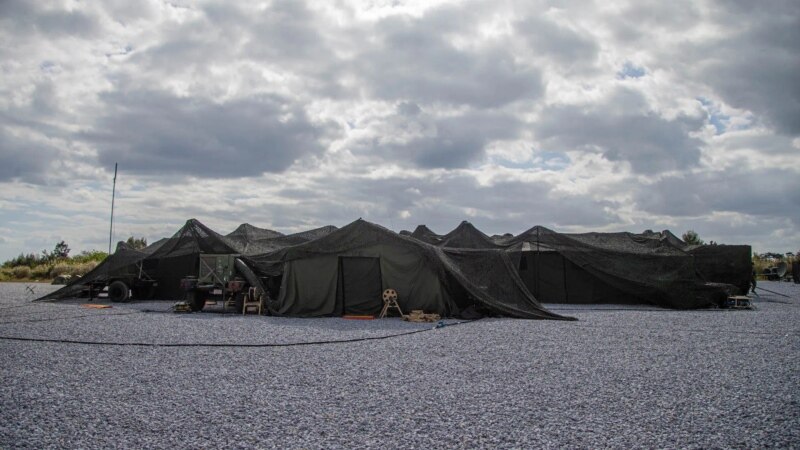
The U.S. and Japan wrapped up a joint command post exercise late this week that analysts said was aimed at improving the coordination of their capabilities in dealing with threats from China.
The Keen Edge 24 computer simulation exercise was intended “to practice responses in the event of a crisis or contingency,” said the U.S. Indo-Pacific Command as it began the exercise on February 1 and ended Thursday.
It is part of an annual bilateral exercise that alternates with field training exercises Keen Sword. The Australia Defense Force participated in Keen Edge for the first time this year.
The U.S. and Japan named China as a hypothetical enemy for the first time in their exercise instead of a provisional name used previously, the Kyodo News reported Sunday, citing unnamed government sources.
The Japanese Defense Ministry reportedly classified the exercise scenarios under the country’s secrecy law, Kyodo reported.
Pentagon spokesperson Lieutenant Colonel Martin Meiners told VOA’s Korean Service on Wednesday that “we do not discuss specific exercise scenarios” and that “Keen Edge 2024 provides a realistic training environment” for the U.S., Japan and Australia to respond to various crisis and contingency situations.
Lawrence Korb, former U.S. assistant secretary of defense and now a senior fellow at the Center for American Progress, said in a telephone interview, “The United States is working with our allies in the region to basically deal with threats from China” and to warn Beijing against using military force to achieve its objectives in the region.
‘Gravely concerned’
In response to the Kyodo report, Liu Pengyu, a spokesperson for the Chinese Embassy in Washington, said via email that authorities in Beijing “noted the relevant report and are gravely concerned over the United States and Japan stuck in the Cold War mentality, putting together exclusive military blocs, and deliberately seeking bloc confrontation.”
He continued, “Taiwan is part of China,” and “if anyone insists on interfering in China’s domestic affairs and obstructing China’s reunification, it will not only be a problem of ‘imaginary enemy,’ but it will pay a heavy price for that.”
China has been making assertive moves in the South China Sea since then-U.S. House Speaker Nancy Pelosi, a longtime foe of Beijing, visited Taiwan in August 2022.
China often flies its jets in a show of force over the independent island nation that it claims as its sovereign territory.
Chinese President Xi Jinping called for reunification with Taiwan in his New Year message delivered on the last day of 2023.
The U.S. and Japan held several naval exercises in the region recently.
They held a Multi-Large Deck Event in the Philippine Sea east of Taiwan, according to the U.S. Navy. The joint exercises were held January 29-February 1, according to a statement by the Japan Maritime Self-Defense Force (JMSDF) on January 31.
The drills involved the nuclear-powered U.S. aircraft carriers USS Carl Vinson and USS Theodore Roosevelt, seven U.S. guided-missile destroyers and two U.S. cruisers joined by JMSDF helicopter destroyer JS Ise.
The U.S. and Japan also held trilateral naval drills with Australia in the South China Sea on February 7-8.
Ralph Cossa, president emeritus and WSD-Hana Chair in peace studies at the Pacific Forum, told VOA in an email on Tuesday that the command post and naval exercises were “aimed at improving defensive (and offensive) capabilities against whatever threat comes along.”
He continued, “In the case of U.S.-Japan, the most likely threat is China and North Korea, but the exercises are only ‘against’ them if they do something hostile toward the allies.”
He said it was important for the U.S. and Japan to demonstrate to potential adversaries such as China and North Korea that they have significant military capabilities “to deter or defeat potential intended actions.”
The U.S. and Japan named China as a major threat alongside North Korea and Russia in a joint statement released after their Security Consultative Committee convened in Washington in January 2023.
They view Beijing’s strategy as “aimed at reshaping the international order” and oppose China’s moves to seize Taiwan as well as Japan’s Senkaku island chain, which China calls the Diaoyu Islands.
Japan’s Coast Guard said on Tuesday that it had urged four Chinese vessels to leave its territorial waters near the islands.
The U.S. and Japan have been ramping up their efforts to deal with threats in the region, including any potential Chinese invasion of Taiwan.
In addition to increasing its defense spending, Japan has been working with the U.S. to update command-and-control arrangements by establishing a permanent joint headquarters as well as improve allied capabilities in the southwest islands, according to Zack Cooper, a senior fellow at the American Enterprise Institute who served as a special assistant to the principal deputy undersecretary of defense for policy at the Defense Department during the George W. Bush administration.
“Each of those efforts would be useful in a Taiwan-related contingency but are also vital regardless of what the exact scenario is that might involve Japan,” Cooper said.
